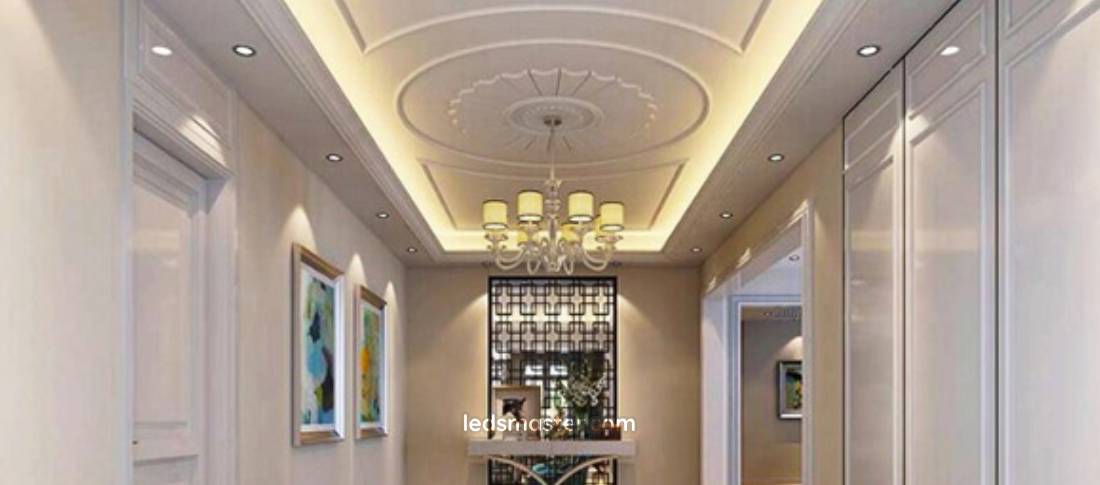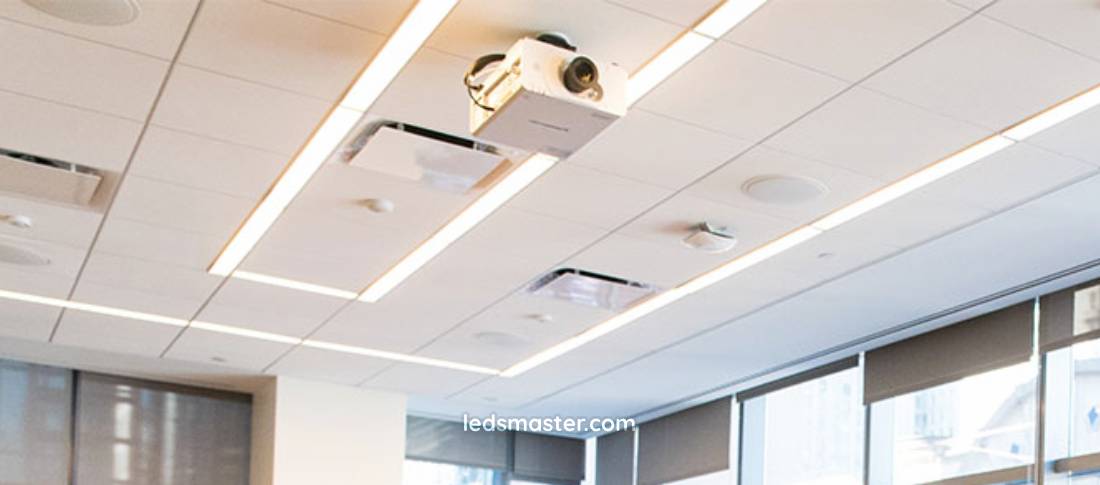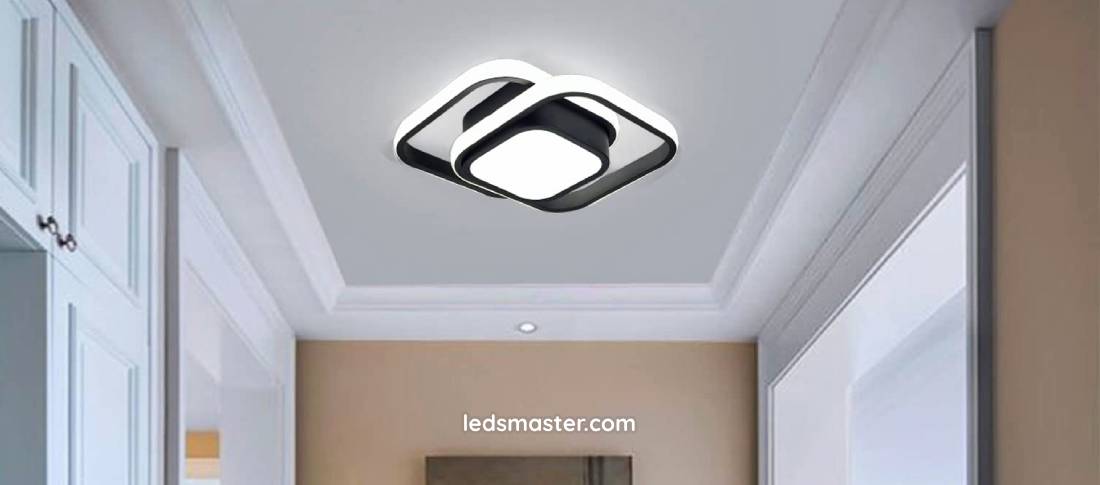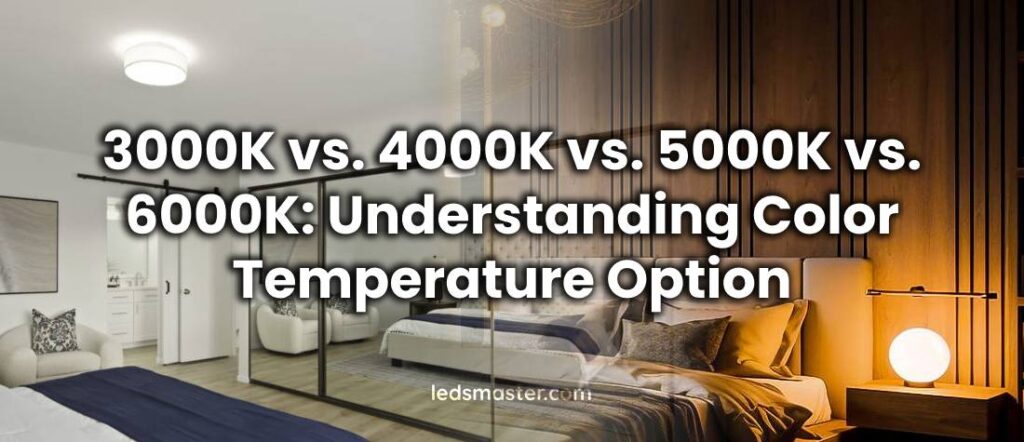Table of Contents
Toggle3000K Color Temperature
Creating a Cozy Ambiance
3000K is often referred to as “Warm White,” a color temperature widely used in residential settings to foster a cozy and inviting ambiance. This color temperature closely mimics the gentle, golden glow of traditional incandescent lighting, offering a soft, yellowish light that is perfect for creating a comfortable environment in living rooms, bedrooms, and dining areas. The warmth of 3000K lighting can transform a space into a tranquil retreat, making it ideal for areas where relaxation and comfort are paramount.
Enhancing Interior Design
The soft, warm light emitted by 3000K fixtures brings a sense of intimacy and homeliness to a room. It is particularly effective in enhancing the natural warmth of wood tones and other earthy colors in interior design, contributing to a harmonious and aesthetically pleasing atmosphere. This color temperature is known for its ability to enrich the appearance of furnishings and decor, making spaces feel more welcoming and personal.
Minimizing Shadows for Comfort
Furthermore, the warm glow of 3000K lighting helps to minimize the harshness of shadows, which can be beneficial in everyday activities. Whether you’re curling up with a book, enjoying a meal with family, or engaging in casual conversation, the reduced shadowing creates a more comfortable visual experience. This makes it easier to focus on tasks without straining your eyes, adding to the overall sense of ease and relaxation that this color temperature promotes.
Gentle on the Eyes
In addition to its aesthetic and practical benefits, 3000K lighting is gentle on the eyes, which is especially important in spaces where people spend a lot of time. The soft light reduces eye fatigue and helps maintain a serene environment, enhancing the overall comfort and well-being of occupants. Whether used in a living room, bedroom, or dining area, 3000K lighting provides a warm and soothing glow that enriches the ambiance and makes any space feel more like home.

4000K Color Temperature
Versatility in Lighting
At 4000K, light is commonly described as “Neutral White” or “Cool White.” This color temperature offers a well-balanced white light that strikes a middle ground between the warmth of lower temperatures and the coolness of higher ones. The resulting illumination is neither too warm nor too cool, making it a versatile choice for a wide range of settings. Its neutrality lends itself to creating environments that are functional yet aesthetically pleasing, making it suitable for various applications from office spaces to retail environments.
Enhanced Visibility and Modern Aesthetics
The neutral white light produced by 4000K fixtures enhances visibility and provides a clean, modern appearance. This characteristic makes it particularly effective in workspaces and commercial areas where clarity and precision are essential. In settings like offices, retail stores, and public areas, the balanced illumination helps to reduce eye strain and improve visual comfort, enabling people to perform tasks with greater accuracy and ease.
Creating an Energetic and Focused Atmosphere
One of the standout features of 4000K lighting is its ability to create an energetic and focused atmosphere. Unlike warmer temperatures that may promote relaxation and a cozy ambiance, 4000K lighting injects a sense of vibrancy and alertness into a space. This makes it ideal for task-oriented environments such as kitchens, bathrooms, and workstations, where bright, clear light is necessary for activities that require high levels of concentration and attention to detail.
Balancing Comfort and Functionality
In addition to its practical benefits, 4000K lighting provides a good balance between comfort and functionality. It is less harsh than the cooler 5000K and 6000K temperatures, offering a more comfortable and inviting environment while still delivering adequate brightness. This balance makes 4000K a popular choice for many applications, including home offices, retail spaces, and healthcare facilities, where both comfort and functionality are key considerations.

5000K Color Temperature
Replicating Natural Daylight
5000K is commonly labeled as “Daylight” because it closely replicates the quality of natural daylight. This color temperature produces a crisp, bluish-white light that offers a higher level of brightness and clarity compared to warmer or cooler light options. Its close resemblance to natural daylight makes it an ideal choice for environments where high visibility and precise color rendering are essential. This is why 5000K lighting is often used in specialized settings such as hospitals, art studios, and workplaces requiring high precision.
Enhancing Focus and Productivity
The daylight quality of 5000K light provides a bright and invigorating illumination that can significantly enhance focus and productivity. This type of lighting mimics the intensity and spectrum of daylight, making it especially beneficial in environments where clear and accurate visual information is crucial. In hospitals and medical facilities, the high contrast and color accuracy of 5000K light support accurate assessments and procedures, while in art studios, it ensures that colors are represented as they would be in natural light, aiding in detailed work and color matching.
Improving Comfort in Low Natural Light
Moreover, the bright and energizing effect of 5000K lighting can help combat the limitations of spaces where natural light is insufficient. By providing a cooler, daylight-like illumination, this color temperature can help reduce eye strain and fatigue, improving comfort and visual clarity in environments that lack adequate natural light. This makes 5000K a practical choice for areas like offices, workshops, and retail spaces where bright, consistent lighting is necessary for optimal performance and safety.
Considerations for Ambiance
However, it’s important to note that while 5000K lighting is excellent for visibility and task performance, it may not be the best choice for creating a relaxed or cozy atmosphere. The cool, intense light can feel somewhat stark and clinical, which might not be suitable for areas intended for relaxation or leisure. Therefore, while 5000K is ideal for settings that demand bright, clear light, it is less appropriate for spaces where a warm, inviting ambiance is desired.
6000K Color Temperature

Characteristics of Cool Daylight
6000K is often referred to as “Cool Daylight” and is characterized by its very cool, bluish-white light, which is even more intense than the 5000K daylight option. This color temperature produces an exceptionally bright and crisp illumination that is ideal for environments where maximum visibility and sharpness are essential. Due to its high-intensity light and cool tone, 6000K is commonly used in settings such as industrial facilities, garages, warehouses, and other spaces where a high level of illumination is crucial for both safety and functionality.
Enhancing Visibility and Detail
The 6000K color temperature provides a strikingly cool and clean light, which enhances visibility and detail. This makes it particularly effective in environments that demand precise visual clarity, such as manufacturing areas, assembly lines, or any space where intricate tasks are performed. The cool daylight effect of 6000K lighting can help improve the accuracy of work by highlighting fine details and reducing shadows, which is essential in high-precision operations.
Considerations for Atmosphere
However, the intense, bluish-white light produced by 6000K can create an environment that feels stark and somewhat clinical. This type of lighting may come across as harsh or cold, which can detract from the comfort and warmth that is often desired in residential or hospitality settings. The high color temperature can make spaces feel more sterile and less inviting, which might not be suitable for areas where a cozy and welcoming atmosphere is important.
Benefits for Daylight Simulation
Despite these characteristics, 6000K lighting can be highly beneficial in situations where mimicking natural daylight is necessary or where accurate color rendering is critical. For instance, in spaces where natural light is limited or where daylight simulation is required, 6000K lighting can provide a bright, consistent light that helps reduce eye strain and fatigue. This makes it a valuable choice for areas that need to maintain high visibility and visual clarity over extended periods.
Comparison of 3000K, 4000K, 5000K, and 6000K
When selecting the appropriate color temperature for lighting, it’s crucial to assess both the specific needs of your space and the desired atmosphere. Each color temperature—3000K, 4000K, 5000K, and 6000K—offers distinct characteristics that can greatly influence the mood, functionality, and overall effectiveness of a lighting scheme.
| Color Temperature | Description | Ideal For | Characteristics | Atmosphere Created | Potential Drawbacks |
|---|---|---|---|---|---|
| 3000K (Warm White) | Gentle, golden glow | Living rooms, bedrooms, dining areas | Enhances warmth of wood tones and earthy colors; creates a cozy, relaxing ambiance | Cozy, inviting, tranquil | Not ideal for high visibility tasks or precise color rendering |
| 4000K (Neutral White) | Balanced, clean light | Kitchens, offices, retail environments | Good visibility; modern and uncluttered look; reduces eye strain | Harmonious balance between warmth and coolness | May not be as warm as 3000K for comfort-oriented spaces |
| 5000K (Daylight) | Bright, crisp illumination | Workspaces, art studios, medical facilities | Mimics natural daylight; enhances productivity and visual accuracy | Energizing, clear, focused | Can feel stark or clinical, less suitable for relaxed settings |
| 6000K (Cool Daylight) | Intense, bluish-white light | Industrial environments, warehouses | Maximum brightness and detail; enhances contrast and highlights | Cool, high-intensity, sharp | May create a harsh, sterile ambiance not suited for comfort-oriented spaces |
3000K lighting, often described as “Warm White,” provides a gentle, golden glow that creates a cozy and inviting atmosphere. This color temperature is ideal for residential spaces where comfort and relaxation are key priorities. It is well-suited for living rooms, bedrooms, and dining areas, enhancing the warmth of wood tones and earthy colors, and contributing to a tranquil and homely environment. However, while 3000K lighting excels in creating a soothing ambiance, it may not be the best choice for tasks requiring high visibility or precise color rendering due to its softer light output.
4000K lighting, also known as “Neutral White,” offers a balanced, clean light that lies between the warmth of 3000K and the coolness of higher temperatures. This versatile color temperature is suitable for a range of settings, including both residential and commercial applications. The neutral white light of 4000K provides good visibility and a modern, uncluttered look, making it ideal for spaces like kitchens, offices, and retail environments. It strikes a harmonious balance between warmth and coolness, enhancing clarity and reducing eye strain while maintaining a visually pleasing atmosphere.
5000K lighting, labeled as “Daylight,” mimics natural daylight with its bright, crisp illumination. This color temperature is particularly effective in environments where high levels of brightness and accurate color representation are essential. It is perfect for workspaces, art studios, and medical facilities where detailed visual clarity and focus are crucial. The energizing, daylight-like quality of 5000K lighting can boost productivity and improve visual accuracy, although it may create a somewhat stark or clinical feel that might not be suitable for more relaxed or comfort-oriented settings.
6000K lighting, known as “Cool Daylight,” provides an intense, bluish-white light that delivers the highest level of brightness and detail. It is well-suited for industrial environments, warehouses, and other areas where maximum visibility and sharpness are necessary for safety and functionality. The cool, high-intensity light of 6000K enhances contrast and highlights intricate details, making it ideal for precision tasks. However, the cool and bright nature of 6000K lighting may result in a harsh, sterile ambiance that is less conducive to creating a warm and inviting atmosphere in residential or hospitality settings.
Practical Considerations for Choosing Color Temperature
Considerations for Residential Areas
When selecting a color temperature for lighting, it’s important to carefully consider the primary function of the space, the desired ambiance, and the specific types of tasks performed there. Each color temperature creates a distinct atmosphere and can significantly influence both the functionality and visual appeal of a room. For residential areas, warmer color temperatures like 3000K are often preferred to create a cozy and inviting atmosphere. This warm white light mimics the natural glow of incandescent bulbs and adds a comfortable, homely feel to spaces such as living rooms, bedrooms, and dining areas. The soft, yellowish light provided by 3000K lighting enhances relaxation and makes these areas more inviting, fostering a sense of warmth and tranquility. It helps in creating an environment where people can unwind and enjoy their time, contributing to a pleasant and serene living experience.
Optimal Lighting for Workspaces and Commercial Settings
In contrast, for workspaces and commercial settings where visibility and productivity are critical, neutral or daylight color temperatures such as 4000K and 5000K are more suitable. 4000K, often described as “Neutral White,” provides a balanced light that is neither too warm nor too cool. This makes it ideal for environments where clarity and accuracy are important, such as offices, kitchens, and retail spaces. The neutral tone of 4000K lighting improves visibility and reduces eye strain, making it easier to perform tasks with precision and efficiency.
Enhancing Visibility and Focus
For settings that require even greater illumination and visual sharpness, 5000K “Daylight” lighting is a strong choice. This color temperature closely resembles natural daylight and is particularly effective in environments where high visibility and accurate color rendering are essential. In spaces such as art studios, hospitals, and high-precision work areas, 5000K lighting enhances focus and detail, supporting tasks that demand high levels of concentration and accuracy. Its bright, cool light helps to simulate daylight conditions, making it easier to work in environments that lack sufficient natural light.
Impact on Color Appearance and Materials
Additionally, the choice of color temperature can impact the appearance of colors and materials within a space. For instance, 4000K lighting often provides more accurate color representation than 3000K, which can be beneficial in settings where true color perception is important. The neutral white light of 4000K helps to display colors more vividly and accurately, enhancing the overall aesthetic and functionality of the space.
High Contrast and Detail Enhancement
On the other hand, 6000K lighting, with its cool, bluish-white hue, can further enhance contrast and detail. This color temperature is particularly useful in environments where maximum brightness and clarity are needed. The high level of contrast provided by 6000K lighting can help highlight intricate details and improve visual precision, making it ideal for industrial settings or tasks that require acute attention to detail.
Conclusion
Each color temperature—whether it’s the warm and cozy 3000K, the balanced 4000K, the bright and focused 5000K, or the intense 6000K—offers distinct advantages tailored to different settings. From creating a tranquil atmosphere in residential areas to enhancing visibility and productivity in workspaces, selecting the right color temperature can significantly influence both the aesthetic appeal and practical performance of your lighting.

